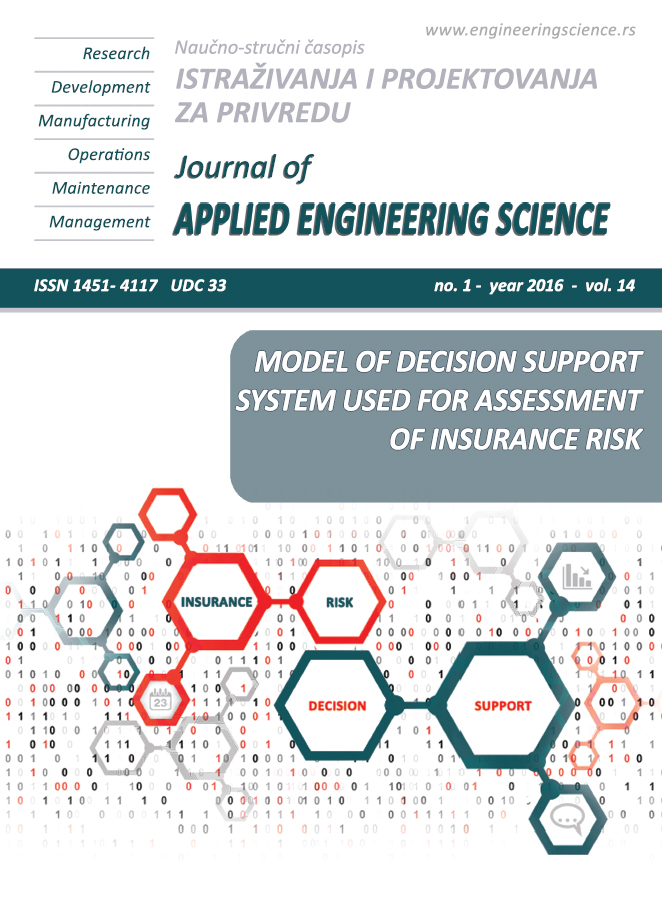Development of cluster approach in tourism (Russia case study)
Abstract
The concept of tourism clustering is currently in the focus of tourism development on national and regional levels. The research is based on international academic literature review and the analysis of Russian experience. The paper analyses the dynamics of the tourism potential of the partner regions joined into the cluster “Velikaya Volga” (The Big Volga), based on the expert opinion. There is a cost-benefit analysis of the tourism industry in the regions included into the tourism cluster using statistical data. The analysis-based diagrams show the differentiation of the Volga regions in terms of tourism potential use. Econometric approach allowed studying the dependence of tourism potential indicators on the tourism cluster “Velikaya Volga” revenue. The results of the research allow grouping the regions included in the cluster depending on the efficiency of their tourism potential implementation. The research also shows the significance of the comparative evaluation of tourism cluster potential. The comparative method used for the cluster analysis allows enhancing the development of the regional tourism.
References
Frangially, F. (2010). World Tourism: Global and region review. (p. 176). Paris, Roma: UNWTO.
th General assembly of the World Tourism Organization. Tourism news, (2009). UNWTO, completed its work in Astana. Retrieved from http://www.indigotur.ru/tnews/6
Leading countries in the Travel & Tourism Com-petitiveness Index (TTCI) in 2015 (2015) Retrieved from http://www.statista.com/statistics/186639/best-ranked-countries-in-the-travel-and-tourism-competetiveness-index/date of reference 2015 Sep 30.
Porter, M. (2001). Competition Moscow. (p. 495). Publishing House "Williams". P.207.
Porter, M. (1990). The competitive advantage of nations. (p. 270). New York: Free press.
Buryatia tourism cluster. (2007). . 25 May. P. 5. Retrieved from http://www.nbrb.ru/books/element.php?ID=2754 2010 Jan 16.
Aleksandrova, A. (2007). Tourism clusters: Contents, borders, operating mechanism. In Contemporary problems of service and tourism. (pp. 51-61).
Sharpley, R. (2002). The challenges of economic diversification through tourism: The case of Abu Dhabi. International Journal of Tourism Research, 4(3), 221-235. doi:10.1002/jtr.378
Santos, S. (2009). The tourism clusters role in regional development: Presenting a competitiveness conceptual model. In: Tourism Destination Development and Brand-ing, Eilat. 127-139.
Jackson, J., Houghton, M., Russell, R., & Triandos, P. (2005). Innovations in Measuring Economic Impacts of Regional Festivals: A Do-It-Yourself Kit. Journal of Travel Research, 43(4), 360-367. doi:10.1177/0047287505274649
Simmie, J. (2004). Innovation and clustering in the globalised international economy. Urban Studies, 41(5-6), 1095-1112. doi:10.1080/00420980410001675823
Krajnović, A. (2013). Model for Tourism Clusterisation of Dalmatia as the Umbrella Brand. Economica Jadertina, 2, 74-89.
Shabalina, N.V. (2012). Introduction into tourism clustering. Retrieved from http://bzm.su/articles/article-05 2012 Jan 22.
Volga, V. . . Retrieved from http://greatvolga.com/ 2015 May 24.
Investment ratings of Russian regions Retrieved from http://raexpert.ru/rankings/#r_1108 2015 Jan 15.
Russian Agency for Tourism. . Generalized data for the past 5 years by the subjects of the. Retrieved from http://www.russiatourism.ru/content/8/section/81/detail/4124/ 2015 Jan 15.

